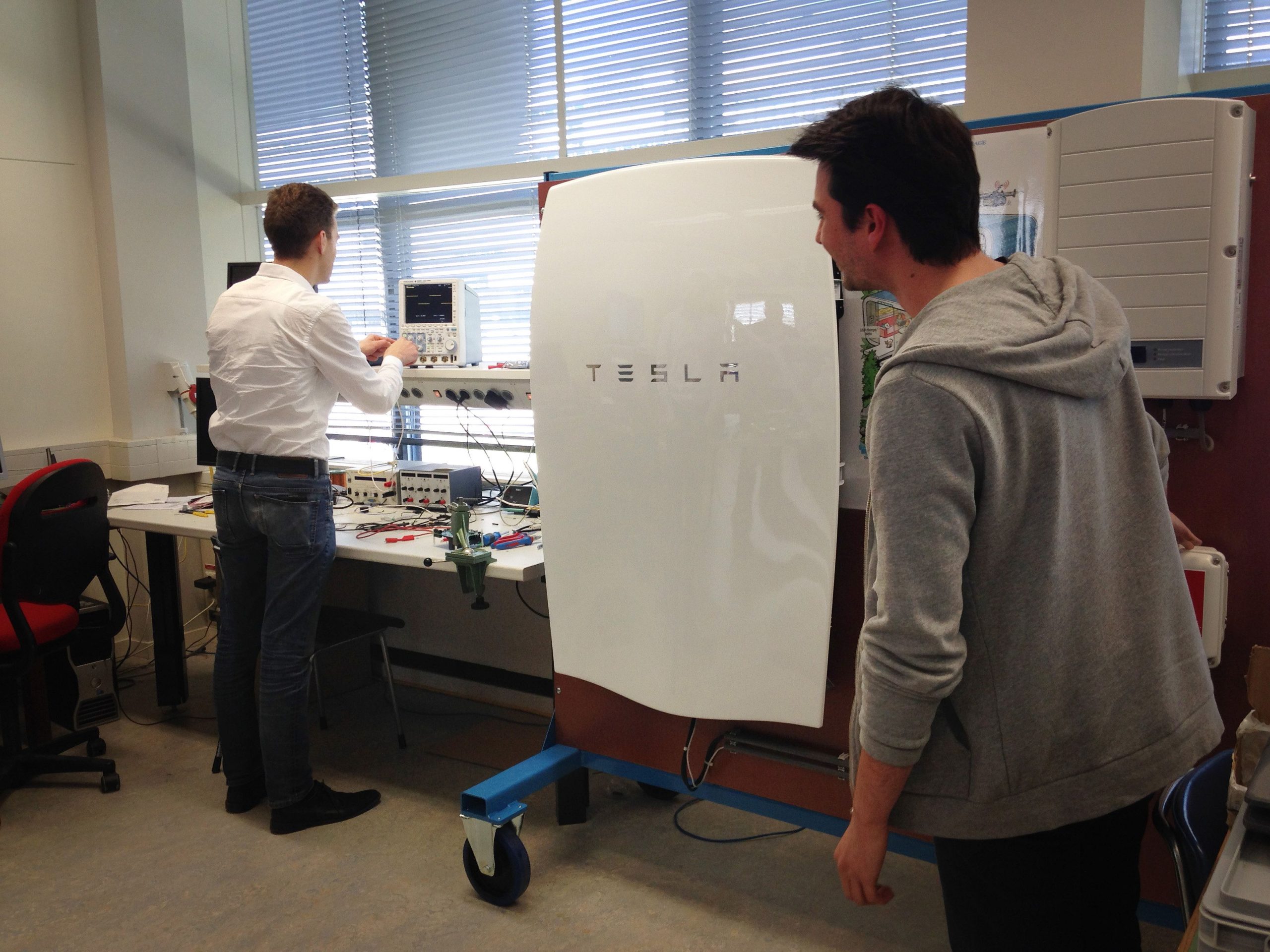The future of electrical power management has arrived in the EWI building. The illustrious Tesla Powerwall has just not been plugged in yet.
The vigorous white slab mounted in an Electrical Sustainable Energy laboratory plays a pivotal role in three research projects initiated by Professor Pavol Bauer (Faculty of Electrical Engineering, Mathematics and Computer Science). Is this the future we see here? “Yes,” said Bauer. “I’m convinced this is the way to go. Storage and sustainable energy are an ideal combination. Tesla is the first company that enters the market with a plug & play home storage system.”
In fact, the Tesla Powerwall is so new that all publicity about it is subjected to screening by the supplier (hi guys). Huge interests are at stake awaiting the market introduction of the Powerwall. Adverse reports, if any, are to be intercepted at this stage. Hence the disclaimer.
The central promise of home-based or distributed storage is that it improves the reliability of the electrical power grid by absorbing peaks in both production (from solar cells) and consumption (at the start and beginning of the working day). Widespread distributed storage could save investments by transmission system operators (DSO’s) because reinforcements of the grid will become redundant. Home batteries could also avoid investments in additional power plants to supply power during peak demands.
Promises, promises. But how does the Powerwall behave in constellation with photovoltaics, electrical energy converters, and electric vehicles? That is what three PhD candidates are setting out to investigate.
Victor Vega will research the use of the Powerwall in a domestic environment and how such a microgrid decreases one’s dependency on the grid. Another PhD candidate, Gautham Ram Chandra Mouli, will study the constellation of Powerwall and electric vehicle using solar power. The third PhD candidate, Laurens Mackay, will focus on new market models aimed at keeping excess solar power from the distribution grid, and have microgrids storing the energy instead.
But for now, the Powerwall hasn’t been plugged in yet. Bauer and his students are waiting for the supplier not only to connect the system but also to deliver the computer code they need to hack its power management.
Tesla’s iconic CEO Elon Musk has succeeded in making boring batteries sexy. In a polished presentation, he not only presented the Powerwall to an already sparkling audience. He also painted them a future in which the Powerwall is the answer to all the storage demand endemic to renewable energy from home to national scale. Check the presentation for more.



Comments are closed.